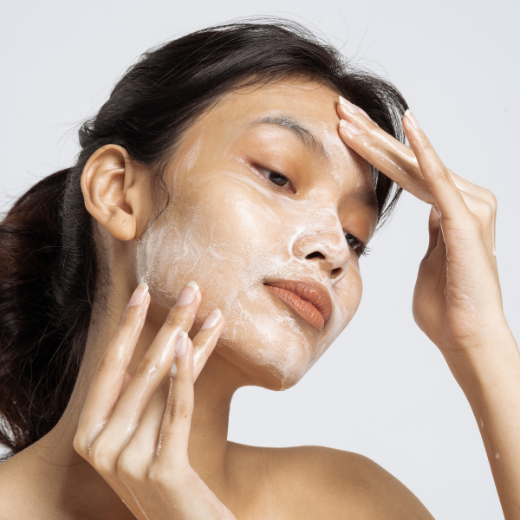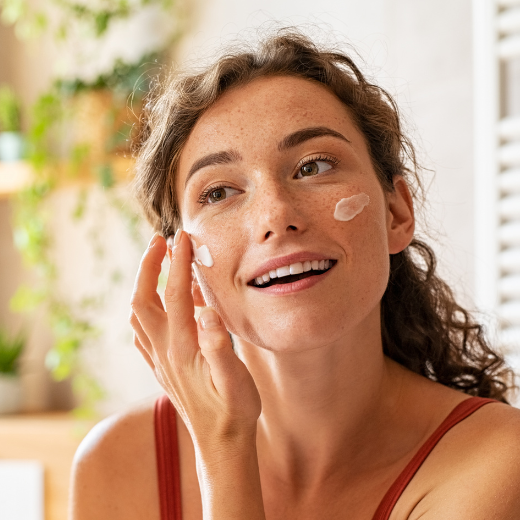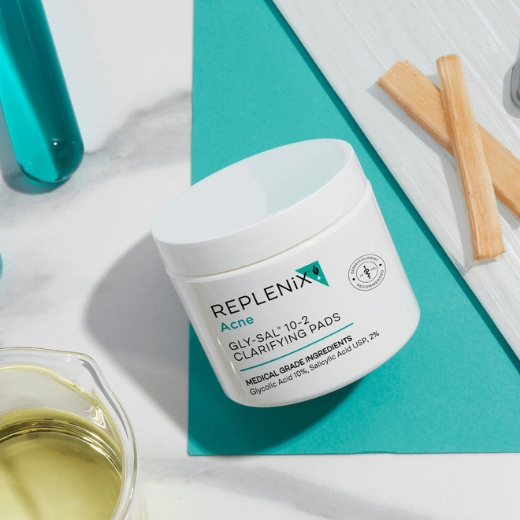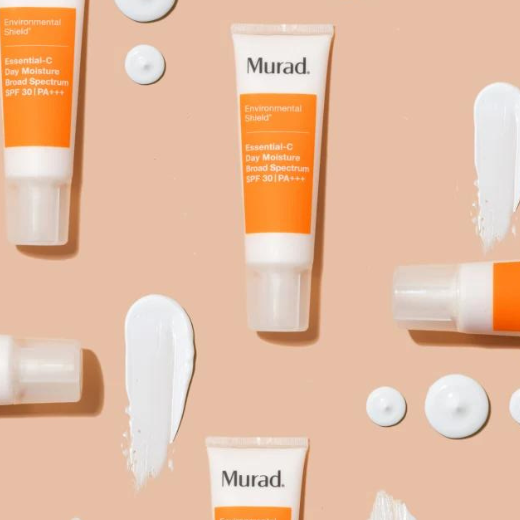How to Deal with Red Spots and Acne Scars on the Skin
Posted by Ellie Swain on Aug 4th 2023
Unfortunately, frustrating red spots, acne scars, and rashes can crop up on our faces – but they don’t deserve a ‘spot’ on our complexions.
These annoying red spots can develop for various reasons, including allergies, dry skin, acne, medical conditions, and more. The redness develops due to the blood rushing to the skin’s surface because of scratching, heat, or infection.
Sadly, these red spots not only look unsightly but can be bothersome too. They may be itchy, painful, flaky, swollen, or even fluid-filled.
But how do you banish these pesky red spots from your skin? While you can cover up red spots with concealers and color correctors, it’s always nicer to have naturally blemish-free skin. We’re here to spill all so you can enjoy clear, spotless skin once again.
1. Use High-Quality, Gentle Skincare Products
Firstly, avoid aggressive scrubs or irritating ingredients. Abrasive scrubs don’t help red marks like post-acne scars and breakouts, as they can’t just be scrubbed away.
If anything, scrubs on acne-prone skin can irritate it further, contributing to micro-tears, which are definitely not what you want. These micro-tears can make any lingering hyperpigmentation marks more challenging to remove and delay your quest to clear, mark-free skin.
Rather than resorting to harsh treatments, choose gentle, high-quality skincare products that nurture your skin's natural repair process. Cleansers and toners should be mild, ideally pH-balanced, to avoid stripping the skin's natural oils. And opt for moisturizers that provide nourishment without clogging pores or exacerbating acne.
When dealing with acne-prone skin, remember that less is often more. Stick to cleansing no more than twice a day and exfoliate only once or twice a week. In addition, always be patient with your skin.
Healing takes time, and rushing the process may lead to more harm than good. For optimal results, it's crucial to maintain a consistent skincare routine and give your products enough time to show results.

2. Use a Daily BHA Exfoliant
BHA’s, like salicylic acid, exfoliates the outer layer of skin while also penetrating deep into the pores. This can dissolve the blockages that contribute to acne.
Likewise, salicylic acid is anti-inflammatory, tackling redness. Use a salicylic product to prevent the development of breakouts while speeding up the repairing process of already present blemishes – it’s a win-win!
We love the Replenix Gly-Sal Clarifying Pads. These skin-healing pads are packed full of salicylic and glycolic acid to fight acne and resurface the complexion. The pads contain ultra-pure, medical-grade crystalline glycolic acid 10%, teamed with clinical-grade salicylic acid USP 2%.
The product is scientifically formulated to clear pores and quicken the removal of dead skin cells that can affect the proper oil drainage of the skin.
3. Apply Sunscreen Daily
It doesn’t take a genius to know that unprotected exposure to UV light damages the skin and contributes to red acne marks lingering for longer.
Protecting your skin from the sun daily is key for reducing the appearance of post-acne red marks and preventing premature aging. Wearing sunscreen keeps your skin healthy when used as directed and helps reduce the risk of skin cancer. It’s a no-brainer, right?
There are a ton of excellent sunscreens on the market, but we’re big fans of the Murad Essential C Day Moisture SPF 30. This formula hydrates, protects, and revitalizes the skin.
The sunscreen is rich in antioxidants, helping your skin become glowing and radiant while protecting it from UV damage and healing it from environmentally induced damage.
4. Seek Professional Treatment
While a great skincare routine is key for banishing red spots, you can also tackle discoloration and inflammation with professional treatment. For example, intense pulsed light (IPL) treatments can help.
If you have a darker skin tone, consider discussing an alternative laser treatment with your dermatologist.
Another option is a monthly BHA or AHA peel applied by a cosmetic dermatologist. Or discuss other options with your dermatologist.
5. Opt for Products Containing Antioxidants and Cell-Communicating Ingredients
Antioxidants and cell-communicating ingredients help protect your complexion against damage while repairing it. This lessens the risk of inflammation and helps your skin recover quickly, too. The much-loved skincare ingredient vitamin C is ideal for treating post-breakout red spots.
The PCA Skin C-Quench Antioxidant Serum combines stem cell extracts with vitamin C to reduce the look of fine lines and wrinkles while also hydrating and strengthening the skin and treating red spots.
Multiple antioxidants and botanicals in the formula deliver superior protection from aging UV rays and other external offenders, too. What can’t this serum do?
Do you want more skincare advice? Here are the benefits of body scrubs.



